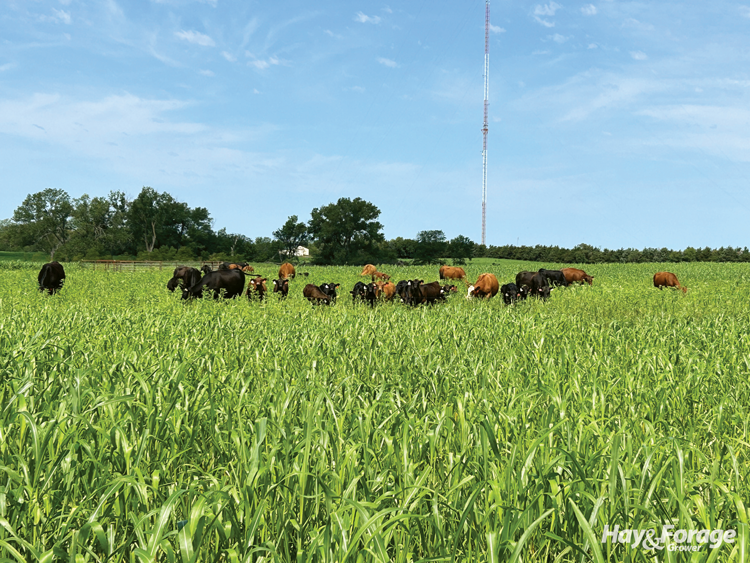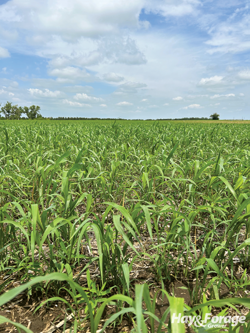
In the Midwest, over the last two decades, both June and September have shown a trend toward warmer average monthly temperatures. This extended summer period prolongs the “summer slump” experienced by cool-season pastures, highlighting the growing need and numerous benefits of incorporating warm-season annual grasses into these systems. Warm-season annual grasses like sudangrass offer a solution to counter the summer slump, providing a much needed break for cool-season perennial pastures during the warmest months of the year.

Most producers are familiar with sorghum-sudangrass as it is known for its high yield potential. However, one of its parents, sudangrass, seems to be almost forgotten about when it comes to annual forage production. This is a shame because sudangrass can be a great option for summer grazing.
Sudangrass boasts thinner stems than sorghum-sudangrass and can produce excellent leafy growth. Like other warm-season grasses, it is also quite tolerant of drought conditions. Compared to sorghum-sudangrass, sudangrass is less prone to brittleness and breakage and has a higher tillering potential, ensuring better regrowth after grazing events. Sudangrass also contains less prussic acid than sorghum-sudangrass; however, grazing sudangrass should still be avoided until plants reach at least 15 inches in height.
For optimal production, the recommended seeding rate for sudangrass is about 20 to 25 pounds per acre and plant sudangrass approximately one to two weeks after corn when the soil temperature has reached at least 60°F. Usually, it will be ready to graze about 45 days after planting.
Get a head start
Graze sudangrass early and give it a good trim. Early grazing encourages tillering and will enhance overall forage yield. Ideally, start grazing when the plants are 2 feet tall. We generally suggest the first grazing event be more severe, allowing cattle to graze sudangrass to 3 inches, which will stimulate tillering. Then, target 6 inches for the end plant height during grazing events thereafter.
A common mistake is not initiating grazing early enough because the rate of growth is underestimated. Basically, if you think sudangrass will be ready to graze in a week, it is likely to be ready to graze in a few days. I have been a victim of this misjudgment myself.
Target high quality
Sudangrass grows rapidly, which can be a blessing and a curse. Sudangrass can have exceptional feed value when plants are immature and can support high nutrient requirements like those of lactating cows or growing calves. Last year, we grazed beef cows in peak lactation on sudangrass, and they maintained body condition while their nursing calves gained 2 pounds per day.
Hand plucked samples of forage that was 2.5 feet tall at the end of July was 63% total digestible nutrients (TDN) and 20% crude protein (CP). However, when mature, sudangrass can be low quality. To maximize animal performance, manage grazing to keep the forage in a vegetative stage.
Keep cattle moving
Rotational grazing allows for maximum production of nutritious forage. A high stocking rate with a quick rotation will improve forage utilization and allow for forage quality to be maintained. It is recommended to have three to four paddocks with the capacity to produce three days’ worth of grazing per paddock. Last summer in eastern Nebraska, a four-paddock rotation sustained one cow-calf pair per acre for 60 days with regrowth exceeding 15 inches within 10 days after grazing.
Sudangrass can be an asset for mitigating the challenges of the extended summer slump in the Midwest. Timely grazing initiation and rotational grazing systems are key to maximizing sudangrass’ regrowth potential and maintaining forage quality. It can be a great option for bridging the summer slump in cool-season pastures, providing high-quality forage and giving perennial species a break to improve their long-term productivity. •
This article appeared in the April/May 2024 issue of Hay & Forage Grower on page 8.
Not a subscriber? Click to get the print magazine.

